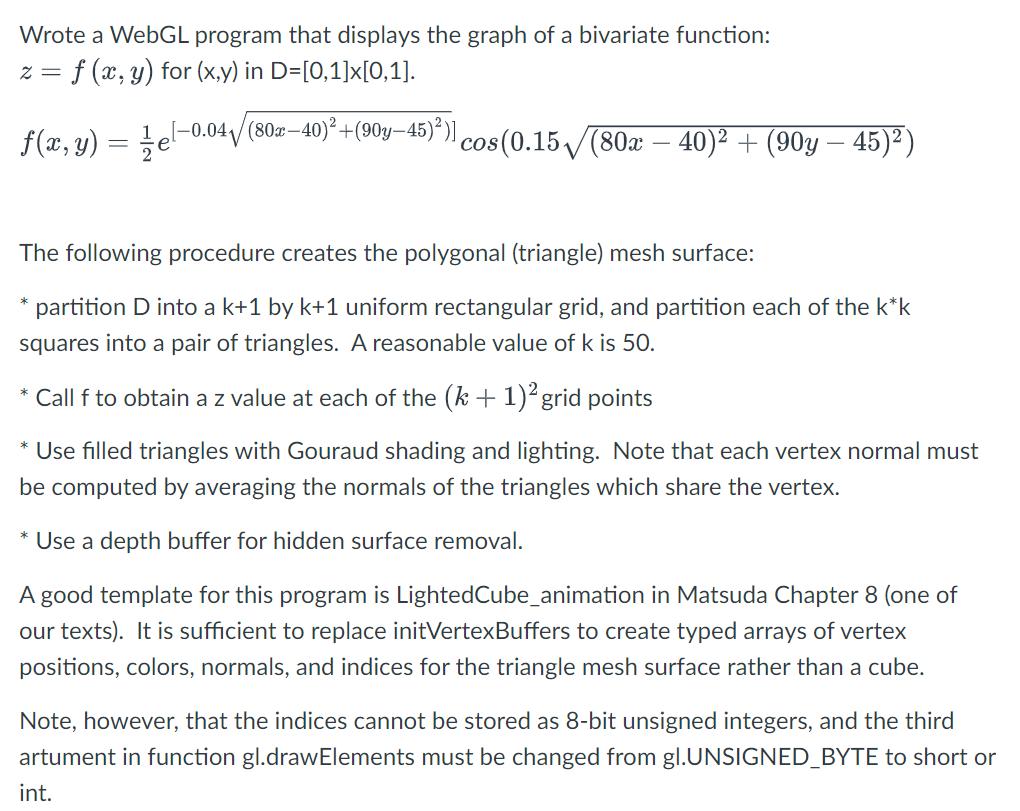Answered step by step
Verified Expert Solution
Question
1 Approved Answer
Wrote a WebGL program that displays the graph of a bivariate function: z = f (x, y) for (x,y) in D=[0,1]x[0,1]. f(x, y) =

Wrote a WebGL program that displays the graph of a bivariate function: z = f (x, y) for (x,y) in D=[0,1]x[0,1]. f(x, y) = el-0.04(80a-40)+(90y-45))) cos(0.15(80x 40) + (90y 45)) The following procedure creates the polygonal (triangle) mesh surface: partition D into a k+1 by k+1 uniform rectangular grid, and partition each of the k*k squares into a pair of triangles. A reasonable value of k is 50. Call f to obtain a z value at each of the (k+ 1)2 grid points * * Use filled triangles with Gouraud shading and lighting. Note that each vertex normal must be computed by averaging the normals of the triangles which share the vertex. * Use a depth buffer for hidden surface removal. A good template for this program is LightedCube_animation in Matsuda Chapter 8 (one of our texts). It is sufficient to replace initVertexBuffers to create typed arrays of vertex positions, colors, normals, and indices for the triangle mesh surface rather than a cube. Note, however, that the indices cannot be stored as 8-bit unsigned integers, and the third artument in function gl.drawElements must be changed from gl.UNSIGNED_BYTE to short or int.
Step by Step Solution
★★★★★
3.42 Rating (158 Votes )
There are 3 Steps involved in it
Step: 1
Step12 To create the polygonal mesh surface for the given bivariate function you can follow the steps outlined in the question Partition the domain D0...
Get Instant Access to Expert-Tailored Solutions
See step-by-step solutions with expert insights and AI powered tools for academic success
Step: 2

Step: 3

Ace Your Homework with AI
Get the answers you need in no time with our AI-driven, step-by-step assistance
Get Started


